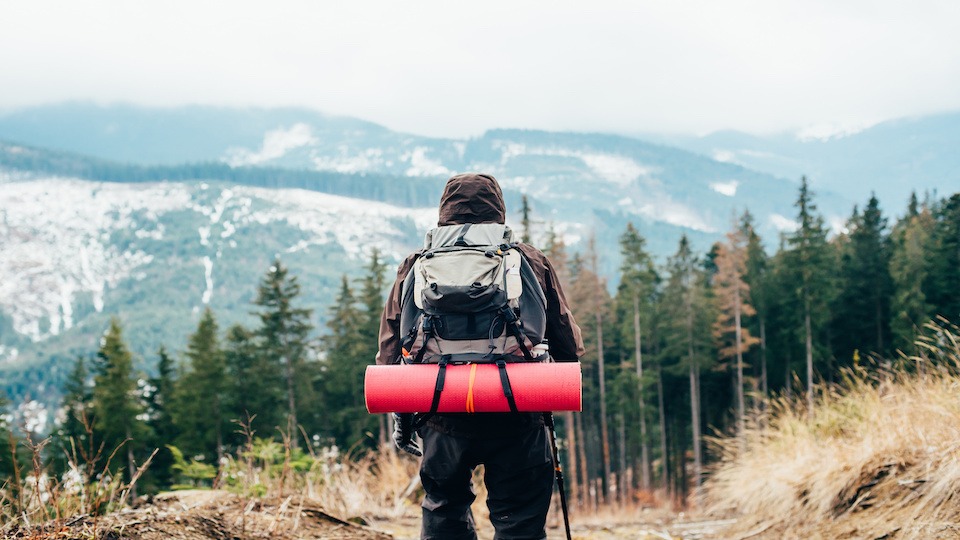Studies show that hiking offers many physical and mental benefits. From decreasing anxiety and stress to preventing osteoporosis and building endurance. Fresh air, exercise and taking in beautiful sites can be exhilarating and uplifting as well as challenging.
You might think, if you can walk, you can hike. For the most part, this is true, however, walking alone does not qualify you to take on the Appalachian Trail or the Continental Divide. Hiking involves uneven terrain, obstacles, and challenges that you won’t come across walking around your neighborhood.
Even if you consider yourself to be in good shape, it is always best to start with novice hikes while you build the confidence and the skills you need for longer journeys. This will also help you avoid injury and emotional and physical burnout.
So, with that said, where do you start? Here are a few things to keep in mind as you transition from a walker to a hiker.
How fit are you?
It is vital that you do a thorough assessment of your fitness level and have a complete physical to rule out any unknown issues. Here are some things to keep in mind:
- Can you walk a mile?
- Can you run a mile?
- Can you climb several flights of stairs?
- Do you have ankle, knee or other joint problems?
- Do you have asthma, allergies or heart problems?
Of course, it is necessary to take inventory of any physical limitations and take the required precautions to protect yourself from injury and harm.
Find a companion
Dogs are fun to hike with, but you need to find a person or persons who can not only keep you company but also make hiking safer. Recruit some friends and family members or join a local hiking group to find other beginner hikers in your area. Keep in mind; it is never safe for novice hikers to hike alone.
Build up your endurance
If you are in poor to fair condition, it is essential to start slowly by walking on neighborhood trails. Be consistent, increasing your distance each week. You will build up the stamina that you need to tackle a longer hike. If you plan on hiking trails that have increases in elevation, practice by climbing up flights of stairs. Don’t forget to stretch thoroughly before and after each training session.
Choose a short first hike
When you feel that you are ready to hit the trail, select a hike that is a shorter distance than what you usually walk. You should figure about 2 miles per hour. Check the elevation on the trail and add an hour to your estimated time for every 1000 feet in elevation.
Get to know the trail
Once you have chosen a trail, it is essential to get to know it. Get a map and study it. Note if the trail is a loop, an out and back, or an end destination where you will have to leave a second car. Study places that paths intersect, where you could make a wrong turn and look for an excellent place to take a break and have a snack. Remember, the fun of hiking is the hike itself, not just finishing.
Check the weather
Check the weather before you pack your backpack. Take the necessary items to keep you comfortable and dry while you hike. Do your best to dress for the weather so that you are not surprised once you start walking.
The right shoes
Poor footwear can make your first hike your last. Invest in decent hiking shoes and socks to protect your feet. Be sure to work your hiking shoes or boots in before your first hike, or you will come out with blisters. Wool or synthetic socks are best, and lightweight hiking shoes are recommended for novices.
Dressing the part
You don’t need fancy brand name hiking clothes to be successful, but you do need to consider what you will wear. Cotton is generally not a good choice because once it gets wet, it can cause chaffing on the skin. Quick dry clothing is excellent – pants and shirts as is dressing in layers. This way you can remove clothing as you warm up.
Your backpack
A backpack is every hiker’s best friend. You should never set out on a trail – even a short one – without a pack and supplies. Of course, your supplies will vary somewhat depending on the nature and duration of your hike. Here are the ten main areas you need to consider when packing your bag.
- Navigation – map, compass
- Insulation – extra clothing, waterproof jacket
- Sun protection – sunglasses, hat, sunscreen
- Light – flashlight/headlamp
- First aid kit
- Fire – waterproof matches, lighter, candle
- Nutrition – food, snacks
- Hydration – water
- Emergency shelter – garbage bag, tent, tarp
- Repair kit – tools, knife
Set your pace
It is important to settle into a steady pace from the start, a pace that you can keep up for the duration of the hike. Again, it is not a race, and you want to finish as strong as you start so don’t overdo it at the beginning.
Be familiar with the no trace principles
Familiarize yourself with the leave no trace principles. This shows that you respect protected lands that are there for you to enjoy. Bottom line, leave the space you hike as it was when you found it – full of natural and inspiring beauty!
Ready to hike?
-Susan Patterson









